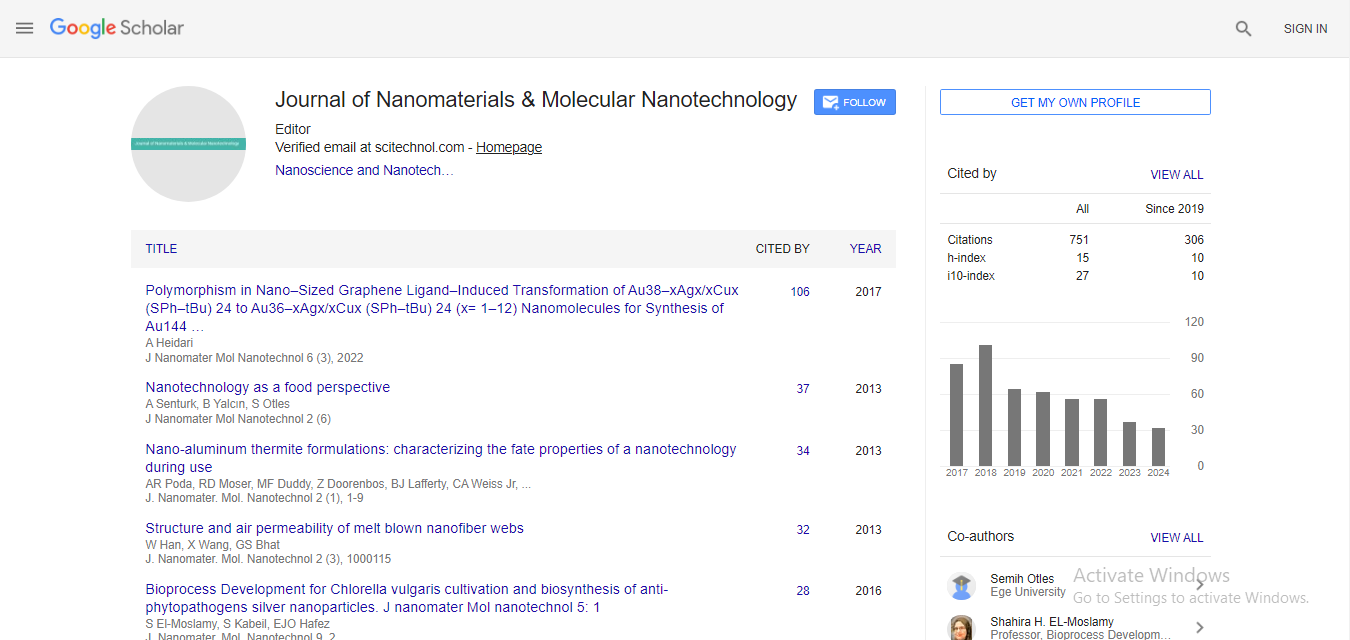Electronic structure and energy gap of boron carbide nanotubes: Density functional theory
Abderrahim Elbiyaali* and Fatmaezzahrae Allali
Cadi Ayyad University, Morocco
: J Nanomater Mol Nanotechnol
Abstract
Since their first observation in 1991 by Iijima, carbon nanotubes have attracted enormous attention of both experimentalists and theoreticians for theirs properties. The classification of carbon nanotube symmetries is an essential stage in predicting their physical properties. The vibrational and electronic properties of pure and boron doped carbon nanotubes are investigated by using spectral moment method and tight binding theory, respectively. First, we are studied the electronic properties, it was found that applying the external fields and doping change the band gap. The energy gap is reduced by B-doping and the reduction value is sensitive to the several parameters such as nanotube diameter, chirality and concentration. The direct B substitution creates a new band above the fermi level and leads to creation of p-type semiconductor. The external fields modify the band structure and convert the doped nanotube into metal. We have studied Boron doped single wall carbon nanotubes; the dispersion relations of this particular nanotube provide excellent information about that nanotube. It is, however, common that one may only require the density of states which is deduced from the dispersion relations.
 Spanish
Spanish  Chinese
Chinese  Russian
Russian  German
German  French
French  Japanese
Japanese  Portuguese
Portuguese  Hindi
Hindi 



